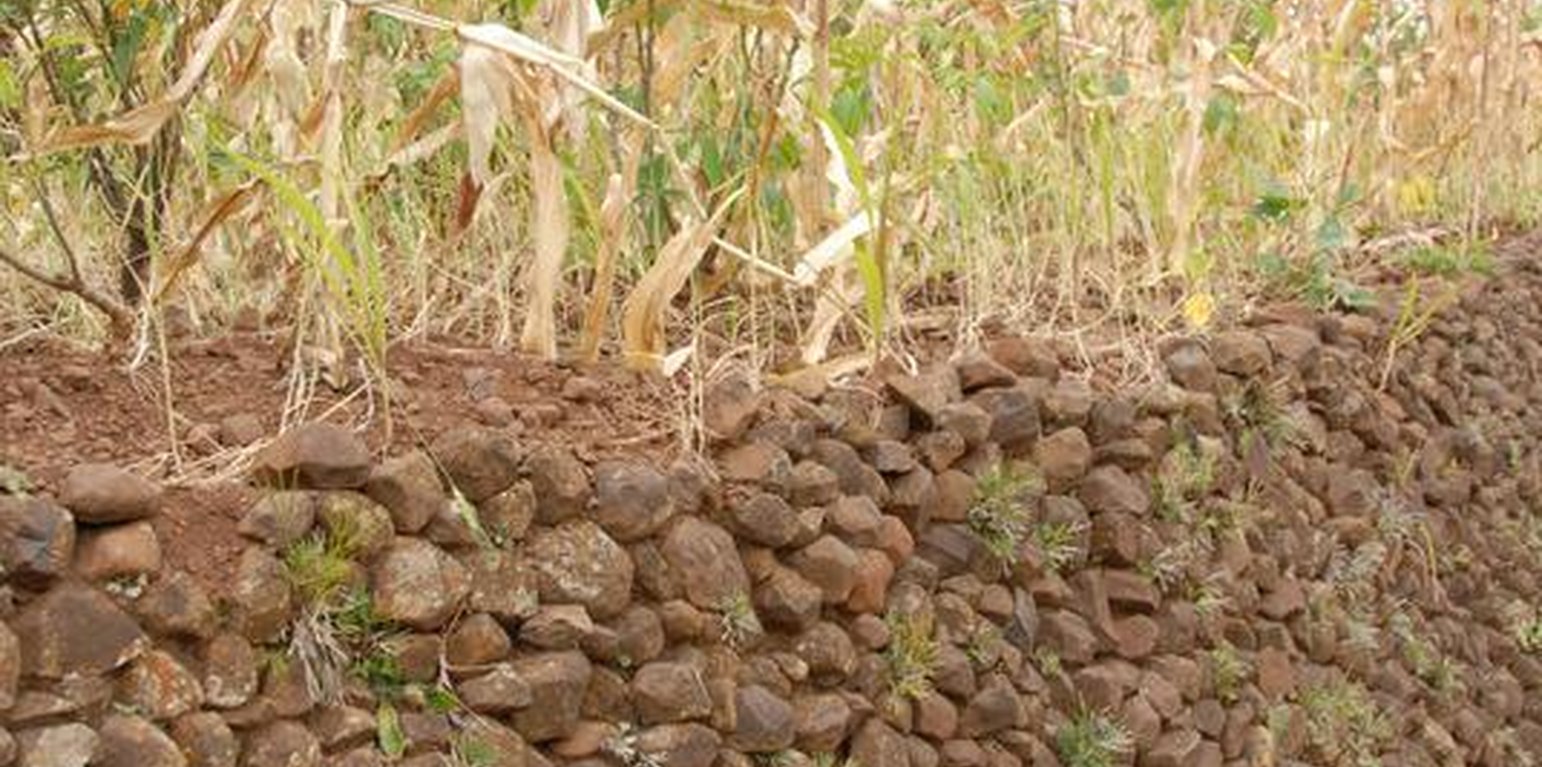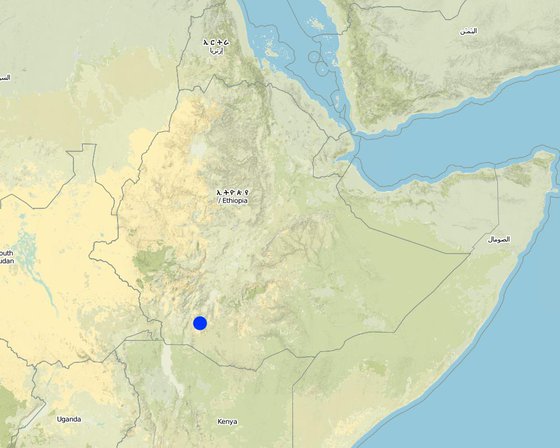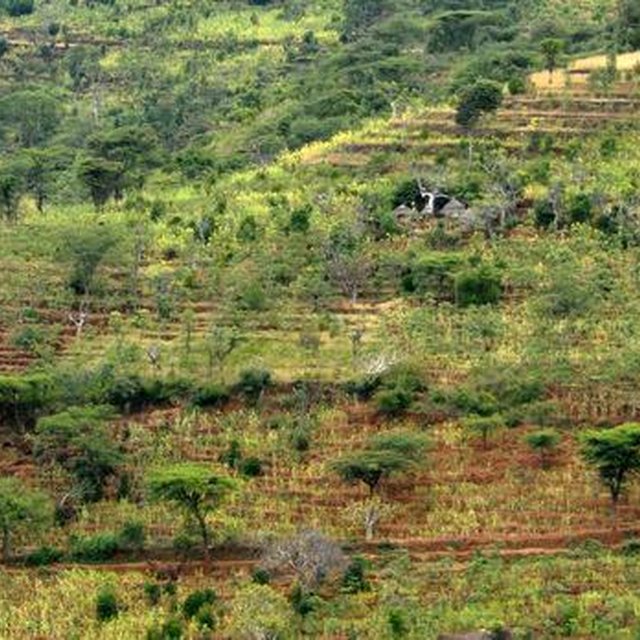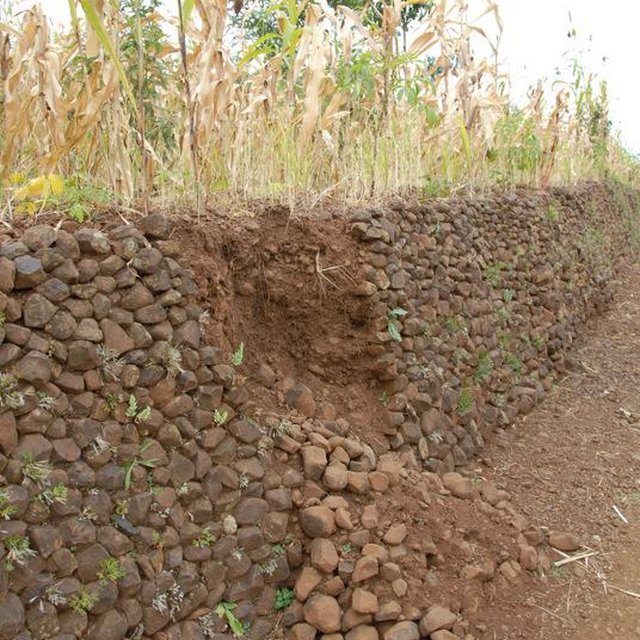



The traditional Konso Bench Terraces are established by building up stone embarkments along the contour and gradually levelling the land in between risers. Levelling is done actively and by siltation processes. Stone walls have to be enhanced periodically. The appearance of the technology evolves over time from stone empankments to bench terraces. The stone walls are supported on the downslope side by trees and / or legumes including coffee, pigeon pea, etc.
Purpose of the Technology: The purpose of the structures is to break the slope length and reduce run-off concentration thereby controlling erosion, increasing water stored in soil and harvesting eroded sediments.
Establishment / maintenance activities and inputs: Terraces have a long tradition in the area, and farmers are specialists in construction of stone walls. The first step during terrace establishment is to dig foundation up to 30 cm. Then stone walls are gradually built up to an impressive height of 1.5-2m above ground. The technology is very labour intensive: establishment takes 5 years and bi-annual maintenance is required. However, it is worth the effort, since without terracing crop production would not be thinkable in a marginal area characterised by shortage and high variability of rainfall, shallow, stony soils on steep slopes, high levels of soil erosion and (thus) frequent food shortages.
Natural / human environment: Social systems for labour-sharing and voluntary assistance have evolved to manage heavy labour inputs. Multiple cropping is practised for rist aversion. Growing leguminous crops helps to further improve soil fertility. Additional water harvesting measures are needed to further raise yields.

Location: SNNPR, Konso, Ethiopia
No. of Technology sites analysed:
Spread of the Technology: evenly spread over an area (approx. 1,000-10,000 km2)
In a permanently protected area?:
Date of implementation: more than 50 years ago (traditional)
Type of introduction








| Specify input | Unit | Quantity | Costs per Unit (Ethiopian Birr) | Total costs per input (Ethiopian Birr) | % of costs borne by land users |
| Labour | |||||
| Labour | ha | 1.0 | 1650.0 | 1650.0 | 100.0 |
| Equipment | |||||
| Machine use | ha | 1.0 | 70.0 | 70.0 | 100.0 |
| Plant material | |||||
| Seeds | ha | 1.0 | 40.0 | 40.0 | 100.0 |
| Construction material | |||||
| Stone | ha | 1.0 | 300.0 | 300.0 | 100.0 |
| Total costs for establishment of the Technology | 2'060.0 | ||||
| Total costs for establishment of the Technology in USD | 242.35 | ||||
| Specify input | Unit | Quantity | Costs per Unit (Ethiopian Birr) | Total costs per input (Ethiopian Birr) | % of costs borne by land users |
| Labour | |||||
| Labour | ha | 1.0 | 500.0 | 500.0 | 100.0 |
| Plant material | |||||
| Seeds | ha | 1.0 | 40.0 | 40.0 | 100.0 |
| Total costs for maintenance of the Technology | 540.0 | ||||
| Total costs for maintenance of the Technology in USD | 63.53 | ||||
Quantity before SLM: 0.4
Quantity after SLM: 0.6
Sorghum yield raised by 50%
Maintenance of cultural heritage
Mise en place d’une organisation des communautés et renforcement des groupes
Due to increased infiltration
Sediment harvesting